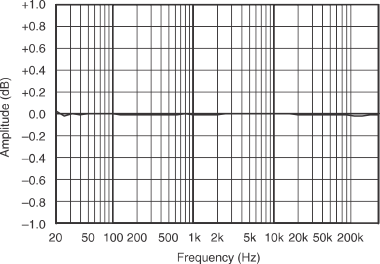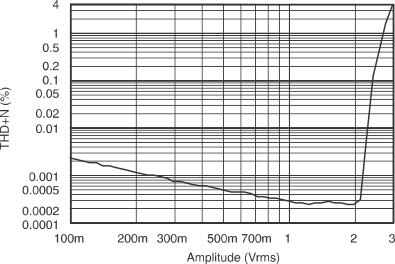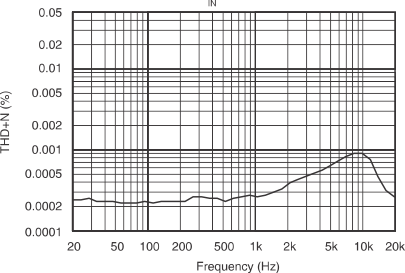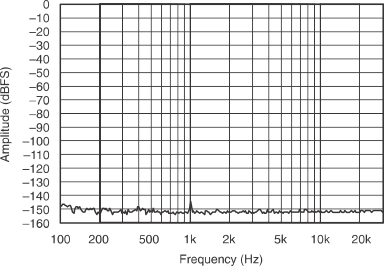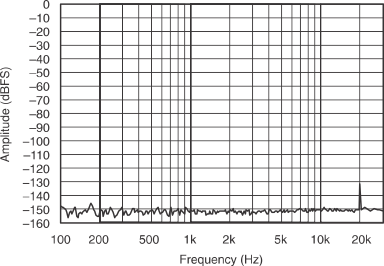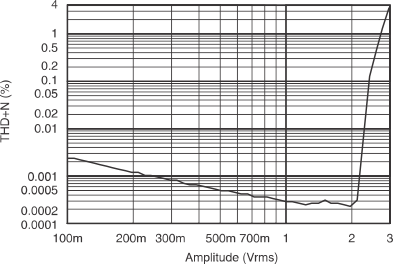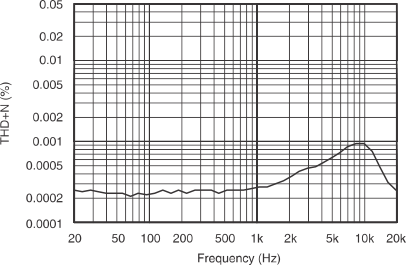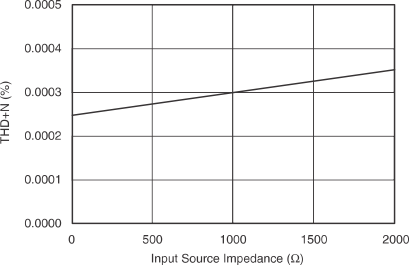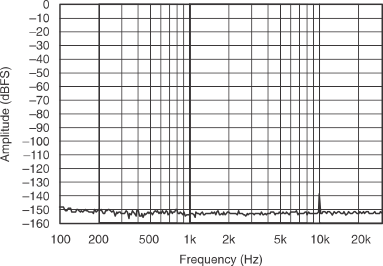| DC CHARACTERISTICS |
| |
Step size |
|
|
0.5 |
|
dB |
|
Gain error |
Gain setting = 31.5 dB |
|
±0.05 |
|
dB |
|
Gain matching |
|
|
±0.05 |
|
dB |
|
Input resistance |
|
|
10 |
|
kΩ |
|
Input capacitance |
PGA2311P, U (U−grade) |
|
3 |
|
pF |
| PGA2311PA, UA (A−grade) |
|
|
7 |
| AC CHARACTERISTICS |
|
THD+N |
VIN = 2 Vrms,
f = 1 kHz |
PGA2311P,
U (U−grade) |
|
0.0004% |
0.001% |
|
| PGA2311PA, UA (A−grade) |
|
0.0002% |
0.0004% |
|
Dynamic range |
VIN = AGND, gain = 0 dB |
116 |
120 |
|
dB |
|
Voltage range, output |
PGA2311P, U (U−grade) |
(VA−) + 1.25 |
|
(VA+) –1.25 |
V |
| PGA2311PA, UA (A−grade) |
(VA−) + 1.25 |
|
(VA−) − 1.25 |
|
Voltage range, input
(without clipping) |
|
|
2.5 |
|
Vrms |
|
Output noise |
VIN = AGND, gain = 0 dB |
|
2.5 |
4 |
μVRMS |
|
Interchannel crosstalk |
f = 1 kHz |
|
–130 |
|
dBFS |
| OUTPUT BUFFER |
|
Offset voltage |
VIN = AGND, gain = 0 dB |
|
0.25 |
0.5 |
mV |
|
Load capacitance stability |
|
|
100 |
|
pF |
|
Short-circuit current |
|
|
50 |
|
mA |
|
Unity-gain bandwidth, small signal |
|
|
10 |
|
MHz |
| DIGITAL CHARACTERISTICS |
| VIH |
High-level input voltage |
|
2 |
|
VD+ |
V |
| VIL |
Low-level input voltage |
|
–0.3 |
|
0.8 |
V |
| VOH |
High-level output voltage |
IO = 200 μA |
PGA2311P,
U (U−grade) |
(VA+) − 1 |
|
|
V |
| PGA2311PA, UA (A−grade) |
(VD+) − 1 |
|
|
| VOL |
Low-level output voltage |
IO = –3.2 mA |
|
|
0.4 |
V |
|
Input leakage current |
|
|
1 |
10 |
µA |
| SWITCHING CHARACTERISTICS |
| fSCLK |
Serial clock (SCLK) frequency |
|
0 |
|
6.25 |
MHz |
| tPL |
SCLK pulse duration low |
|
80 |
|
|
ns |
| tPH |
SCLK pulse duration high |
|
80 |
|
|
ns |
| tMI |
MUTE pulse duration low |
|
2 |
|
|
ms |
| INPUT TIMING |
| tSDS |
SDI setup time |
|
20 |
|
|
ns |
| tSDH |
SDI hold time |
|
20 |
|
|
ns |
| tCSCR |
CS falling to SCLK rising |
|
90 |
|
|
ns |
| tCFCS |
SCLK falling to CS rising |
|
35 |
|
|
ns |
| OUTPUT TIMING |
| tCSO |
CS low to SDO active |
|
|
|
35 |
ns |
| tCFDO |
SCLK falling to SDO data valid |
|
|
|
60 |
ns |
| tCSZ |
CS high to SDO high impedance |
|
|
|
100 |
ns |
| POWER SUPPLY |
|
Operating voltage |
VA+ |
|
4.75 |
5 |
5.25 |
V |
| VA– |
|
–4.75 |
–5 |
–5.25 |
| VD+ |
|
4.75 |
5 |
5.25 |
|
Quiescent current |
IA+ |
VA+ = +5 V |
|
8 |
10 |
mA |
| IA– |
VA– = –5 V |
|
10 |
12 |
| ID+ |
VD+ = +5 V |
|
0.5 |
1 |
| PSRR |
Power-supply rejection ratio
(250 Hz) |
|
|
100 |
|
dB |
| TEMPERATURE RANGE |
|
Operating range |
|
–40 |
|
85 |
°C |
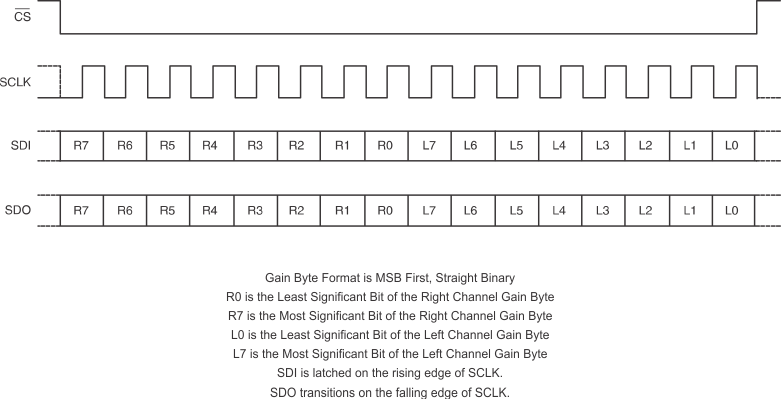 Figure 1. Serial Interface Protocol
Figure 1. Serial Interface Protocol
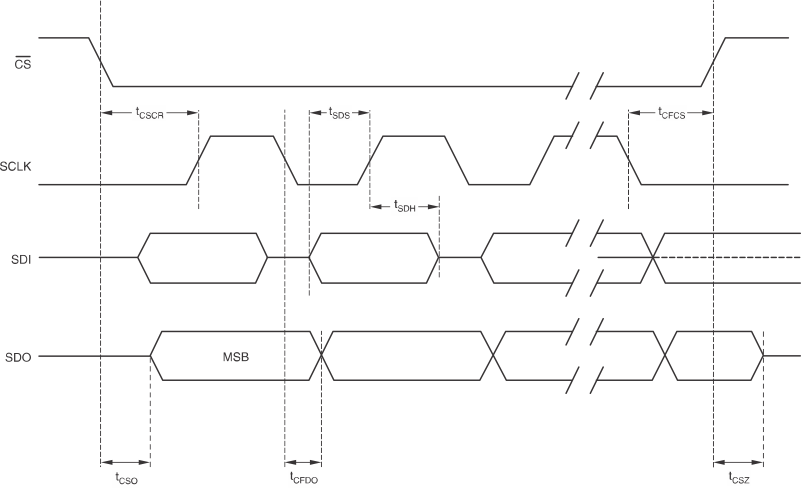 Figure 2. Serial Interface Timing Requirements
Figure 2. Serial Interface Timing Requirements
